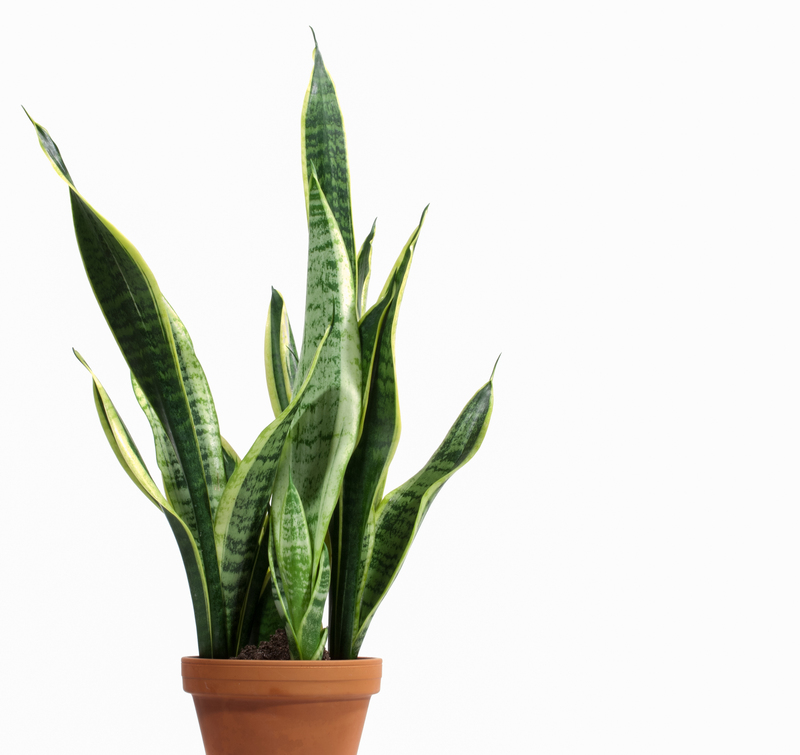Building a Fortified Garden Against Climate Extremes
Posted on 28/05/2025
Building a Fortified Garden Against Climate Extremes
As the reality of climate change intensifies, gardeners everywhere are grappling with new challenges. From scorching heatwaves and prolonged droughts to unprecedented flooding and violent storms, climate extremes threaten the vitality and productivity of our green spaces. The key to survival? Building a resilient, fortified garden that can withstand and thrive despite these evolving environmental stresses.

Understanding the Impact of Climate Extremes on Gardens
Gardens, whether large or small, are increasingly vulnerable to the unpredictability brought about by climate change. Common climate extremes affecting gardens include:
- Heatwaves: Prolonged periods of extreme heat can cause wilting, dehydration, and even plant death.
- Drought: Insufficient rainfall jeopardizes root systems and stunts growth.
- Flooding: Excess water leads to root rot and leeches away vital nutrients.
- Severe storms: High winds and hail cause physical damage, while heavy rain erodes topsoil.
- Frosts and cold snaps: Sudden temperature drops can kill sensitive plants or disrupt growth cycles.
But with awareness and strategic planning, it's possible to craft a climate-resilient garden that not only survives, but also thrives in the face of these challenges.
Key Principles for Fortifying Your Garden
1. Choose the Right Plants
Plant selection is your first line of defense in a resilient garden. Opt for species that are naturally adapted to your local climate--and increasingly, to the extremes it may face. Consider these strategies:
- Drought-tolerant varieties: Such as lavender, succulents, yarrow, sage, and ornamental grasses.
- Heat-resistant plants: Coneflowers, Russian sage, daylilies, and coreopsis.
- Flood-tolerant choices: Marsh marigold, Japanese iris, and swamp hibiscus thrive in wetter soils.
- Cold-hardy plants: Hellebores, Siberian iris, and certain evergreens can withstand chilly snaps.
Pro tip: Native plants are often best adapted to local extremes, needing less water, fertilizer, and care than non-natives.
2. Enhance Soil Resilience
The soil is the garden's foundation, and healthy soil can buffer many climate shocks. Here's how to build soil resilience:
- Regularly add organic matter: Compost, well-rotted manure, and leaf mold improve soil structure, retain moisture, and boost fertility.
- Mulch generously: Thick organic mulch (such as wood chips or straw) insulates plant roots, suppresses weeds, and helps keep soil moisture stable.
- Minimize tilling: No-dig methods protect soil structure and vital microorganisms.
Healthy, living soil acts as both a sponge in flood and a reservoir in drought, making this step essential in *building a fortified garden against climate extremes*.
3. Master Water Management
Water is the lifeblood of any garden. In a world of alternating droughts and deluges, smart water management becomes critical:
- Install drip irrigation: Delivers water directly to plant roots, reducing waste and evaporation.
- Capture rainwater: Use barrels or cisterns to collect runoff from roofs for dry spells.
- Create swales and berms: Earthworks slow and direct rainwater, reducing erosion and improving infiltration.
- Build rain gardens: Specialty beds designed to temporarily hold and filter stormwater.
Tip: Mulching and adding organic matter work hand-in-hand with water management, helping rain soak in during storms and holding onto it in drought.
4. Provide Shelter and Shade
Wind, intense sun, and storms can wreak havoc on the garden. Shield plants with smart structural choices:
- Plant windbreaks: Rows of shrubs, small trees, or tall grasses along prevailing wind sides reduce wind speed and desiccation.
- Use shade cloth or structures: Temporary or permanent shading helps cool plantings during heatwaves.
- Incorporate living fences and trellises: These provide both shelter and vertical growing space.
Microclimates created by these features can make a dramatic difference in protecting sensitive plants and preserving moisture.
5. Diversify Planting
Diversity equals resilience. Avoid monocultures which are more susceptible to pests, diseases, and weather extremes:
- Interplant different species: Mix vegetables, herbs, flowers, and shrubs in beds.
- Stagger plant heights and root depths: Provides stability and better resource sharing.
- Practice succession planting: Ensures something is always growing, protecting soil and offering habitat year-round.
By mimicking nature's variety, you buffer your garden against loss and create a more self-sustaining ecosystem.
6. Flexible and Adaptive Gardening Practices
Climate change brings unpredictability. Stay ahead by being an observant and adaptive gardener:
- Keep detailed records: Note weather patterns, plant performance, and pest outbreaks yearly.
- Be ready to adjust: Change plant choices or schedules as new climate realities emerge.
- Experiment and learn: Try new methods like hugelkultur, deep-mulching, or adding microclimate zones.
Resilience starts with flexibility--always be willing to innovate in your approach to *fortifying your garden for extreme weather*.
Smart Garden Design for Climate Resilience
Optimize Layout and Structure
The physical design of your garden plays a pivotal role in its ability to withstand climate extremes.
- On slopes, orient beds along contours: Reduces runoff and erosion.
- Elevate low-lying areas: Raised beds drain better in wet conditions and warm up sooner in spring.
- Plant in guilds: Grouping compatible species together mimics natural ecosystems for better resilience.
- Use paths and groundcovers: Stabilize soil and allow easy movement, even in wet conditions.
Thoughtful garden layout creates natural buffers, controls water flow, and enhances overall resilience in the face of changing weather patterns.
Build Protective Structures
Consider investing in strong garden infrastructure:
- Hoop houses or greenhouses: Protect crops from frost, floods, and unseasonal weather.
- Raised beds and containers: Offer better control over drainage and soil quality.
- Soil barriers and retaining walls: Defend against erosion and runoff in sloped gardens.
When building a fortified garden against climate extremes, even simple structures can offer critical protection during the worst of the weather.
Maximizing Biodiversity for a Resilient Garden
Encourage Pollinators and Beneficial Wildlife
- Grow a mix of flower species: Provides a steady bloom succession for bees, butterflies, and other pollinators.
- Leave wild corners: Brush piles, log stacks, or small ponds offer refuge to helpful insects, amphibians, and birds.
- Avoid pesticides: Opt for organic solutions to preserve beneficial organisms crucial for garden health.
Biodiversity acts as a buffer: with a multitude of allies in your garden, pests and diseases are less likely to take hold, whatever the weather brings.
Promote Soil Life and Mycorrhizal Networks
Healthy, living soil is the true engine of resilience. Fostering a vibrant underground ecosystem:
- Use compost and organic mulches: Feed the microbial life essential for nutrient cycling and moisture retention.
- Grow deep-rooted cover crops: Like clover or rye, they aerate the soil and help store carbon.
- Avoid chemical inputs: These harm fungi and bacteria crucial to plant health.
By prioritizing soil biodiversity, the entire garden becomes better protected and more productive in the long term.
Climate Extreme Scenarios: Tailored Strategies
Fortifying Gardens Against Drought
- Deep-mulch all beds to conserve soil moisture.
- Prioritize drought-tolerant plants and root crops that access deeper soil layers.
- Water early or late in the day to reduce evaporation loss.
- Group plants by water needs for efficient irrigation.
- Install efficient watering systems, such as drip lines and soaker hoses.
Defending Gardens from Floods
- Build raised beds and berms to lift planting zones above saturated soil.
- Amend heavy clay soils with organic matter to enhance drainage.
- Create channels or dry wells to divert excess water away from key beds.
- Plant groundcovers and grass strips to hold soil and slow runoff.
Protecting Against Heatwaves & Sun
- Install temporary shade cloth over vulnerable beds.
- Double down on mulching to moderate soil temperature and moisture loss.
- Plant fast-growing, broad-leaved annuals as living shade for delicate crops.
Innovative and Long-Term Approaches to Garden Fortification
Agroecology and Permaculture Techniques
Agroecological and permaculture systems focus on mimicking natural processes to foster long-term sustainability and climate resilience. Principles include:
- Layering plants: Tall trees, shrubs, perennials, and groundcovers in the same space for maximal resource sharing and protection.
- Composting and recycling nutrients: Emulate natural cycles and reduce garden waste.
- Swales, ponds, and keyline design: Capture, slow, and store water during heavy rains.
- Integrating livestock or poultry: Where possible, to contribute manure and control pests.
These holistic approaches help build a *fortified and self-sustaining garden ecosystem* capable of bouncing back from shocks.
Using Technology and Smart Tools
- Rainfall and soil moisture sensors for targeted irrigation.
- Weather monitoring apps to anticipate extremes and respond early.
- High-efficiency irrigation timers and automated systems.
Incorporating technology can help in making data-driven decisions to fortify your climate-resilient garden.

Community and Knowledge Sharing
Gardening against climate extremes isn't something you have to tackle alone. Connect with:
- Local gardening clubs and extension services: Find region-specific advice and support.
- Online forums and social media groups: Exchange tips on garden fortification and adaptation.
- Workshops or public lectures: Stay up-to-date on the latest techniques for climate adaptation.
Pooling knowledge and resources can turn individual efforts into a community-wide shield against weather extremes.
Conclusion: Cultivating Hope and Resilience
Building a fortified garden against climate extremes is not just a matter of survival; it's an act of hope and regeneration. By embracing smart design, choosing resilient plants, nurturing healthy soil, and adopting adaptive practices, any gardener can create a sanctuary that weathers the toughest storms. Remember, every challenge is also an opportunity to innovate and grow--both for your garden and the planet.
Start today, and let your green space be a testament to resilience in the face of a changing world--fortified, flourishing, and full of life.

